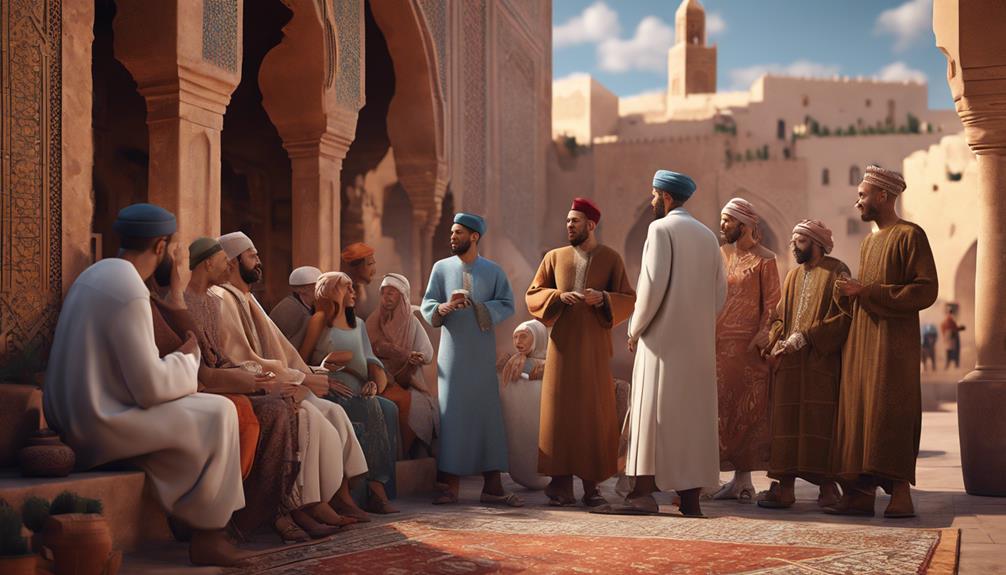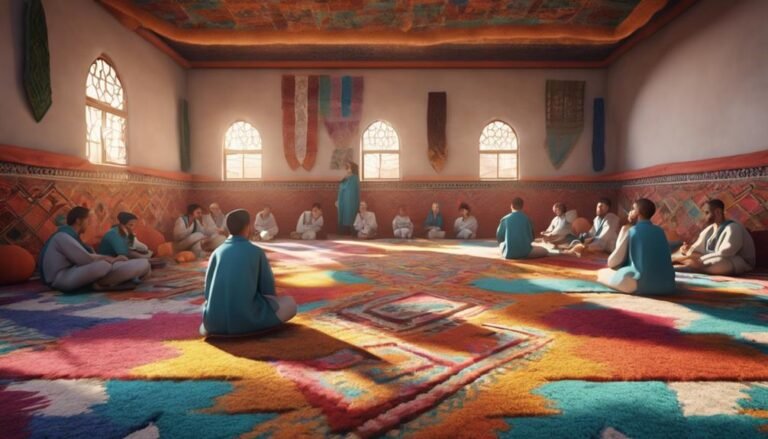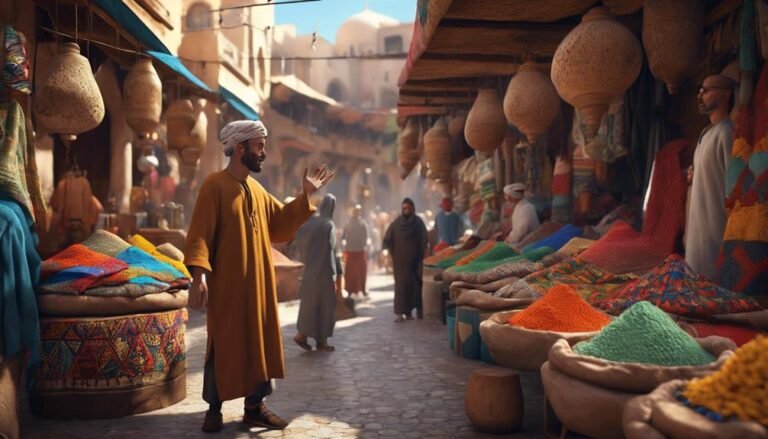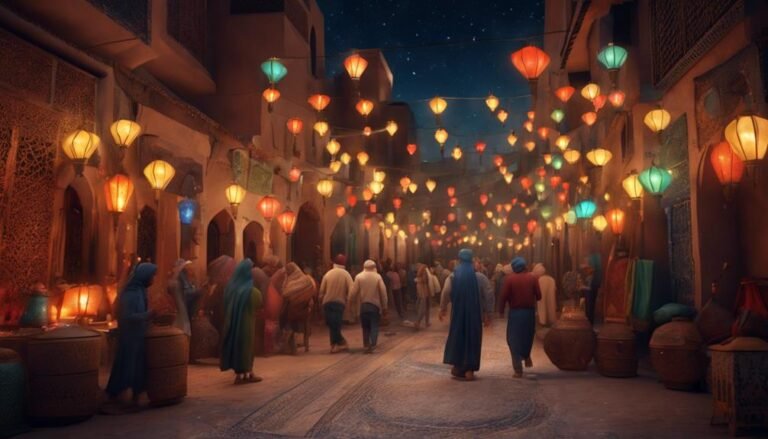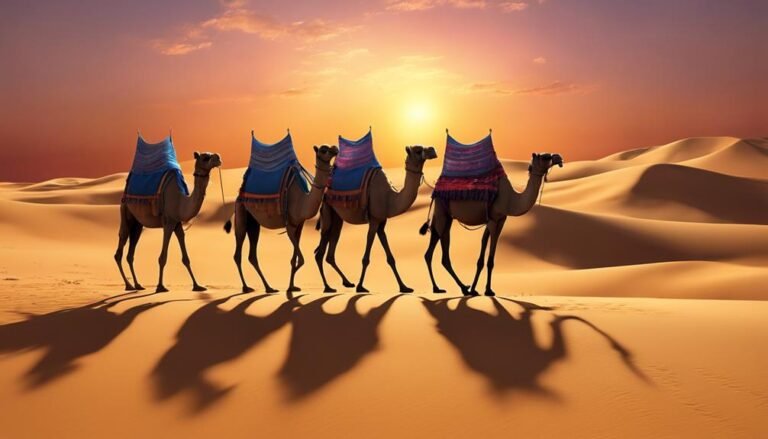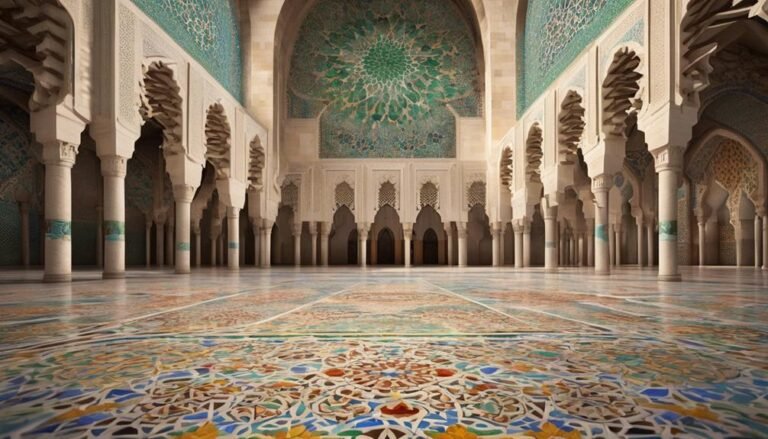In Morocco, Arabic is the official language, deeply ingrained in daily life. Berber languages, like Tamazight, showcase ancient roots and link to the indigenous culture. French and Spanish influence stems from historical periods, shaping Morocco's linguistic diversity. Arabic unites Moroccans, illustrated in numerous aspects of society. The interplay of Arabic, Berber, French, and Spanish forms a fascinating language mosaic symbolizing Morocco's rich heritage.
Key Takeaways
- Arabic is the official language, deeply intertwined with Moroccan identity.
- Berber languages like Tamazight are still spoken, reflecting indigenous heritage.
- French, a legacy of colonization, is used in education, administration, and urban life.
- Spanish influence is present in northern regions, affecting language, architecture, and cuisine.
- Morocco's linguistic landscape is diverse, with Arabic, Berber, French, and Spanish coexisting.
Historical Overview of Languages in Morocco
Have you ever wondered how the historical evolution of languages has shaped the linguistic landscape of Morocco? The linguistic diversity in Morocco is a fascinating result of centuries of interactions between various cultures. Throughout history, Morocco has been a crossroads of different civilizations, including Berbers, Arabs, Europeans, and sub-Saharan Africans. Each of these influences has left its mark on the languages spoken in the region.
The evolution of languages in Morocco is a complex tapestry that reflects the country's rich history. Berber languages, such as Tamazight, have ancient roots in the region and are still spoken by a significant portion of the population. Arabic, brought by the Arab conquest in the 7th century, has become the dominant language of administration and education. Additionally, French and Spanish have also influenced the linguistic landscape due to colonial legacies.
The linguistic diversity in Morocco is a reflection of the country's multicultural heritage. This blend of languages not only reflects the historical interactions between different peoples but also enriches the cultural tapestry of modern-day Morocco.
Arabic: The Official Language
Arabic serves as the official language of Morocco, embodying a pivotal role in the nation's cultural and administrative spheres. The significance of Arabic in Morocco extends beyond mere communication; it is deeply intertwined with the country's identity and heritage. Arabic script adorns the architecture, signage, and art across Morocco, reflecting the language's cultural significance. Additionally, Arabic is not just a means of communication but a symbol of unity among Moroccans, bridging diverse communities under one linguistic umbrella.
To provide a deeper understanding, let's explore a table showcasing the influence of Arabic in various aspects of Moroccan society:
| Aspect | Influence |
|---|---|
| Literature | Rich tradition of Arabic literature, with renowned poets and writers shaping cultural narratives |
| Education | Arabic as the primary language of instruction in schools, emphasizing its importance |
| Religion | Arabic used in religious practices and scriptures, playing a central role in Moroccan faith |
| Governance | Official documents and government proceedings conducted in Arabic for legal clarity |
This table underscores how Arabic permeates different facets of Moroccan life, illustrating its profound cultural significance.
Berber: A Language of Indigenous People
Mainly spoken in various regions of Morocco, Berber stands as a language deeply rooted in the cultural heritage of the indigenous communities inhabiting the country. Berber, also known as Amazigh, is a language that reflects the rich indigenous culture of Morocco. It's a language of profound historical significance, highlighting the country's linguistic diversity and the unique identities of its indigenous peoples.
The Berber language is a symbol of the resilience and pride of the indigenous communities in Morocco. It serves as a means of preserving traditional customs, beliefs, and oral traditions that have been passed down through generations. The linguistic nuances of Berber provide insights into the intricate social structures and cultural practices of the indigenous groups, offering a window into their way of life.
In Morocco, Berber isn't just a language but an essential component of the country's identity, representing the enduring connection between the people and their land. Its presence underscores the importance of indigenous culture in shaping the nation's collective heritage and fostering a sense of unity amidst linguistic diversity.
French: The Legacy of Colonization
French, deeply entrenched in Morocco's history, serves as a lasting reminder of the country's colonial past and its enduring impact on the linguistic landscape. The French colonial influence in Morocco has greatly shaped the linguistic evolution of the nation, leading to a complex linguistic scenario where French coexists with other languages like Arabic and Berber. Below is a table highlighting the influence of French in different aspects of Moroccan society:
| Aspect | Influence |
|---|---|
| Education | French is often used in higher education and prestigious schools. |
| Administration | Many official documents and government proceedings are conducted in French. |
| Business | French is commonly used in business transactions and international trade. |
| Media | French-language media outlets play a significant role in the country's media landscape. |
| Urban Life | In urban areas, French is frequently used in social interactions and signage. |
The enduring presence of French in various domains of Moroccan life is a reflection of the lasting impact of colonialism on the country's linguistic fabric.
Spanish: Influence and Presence
Spanish weaves its influence and presence into various facets of Moroccan society, contributing to the multifaceted linguistic tapestry of the nation. The historical interactions between Spain and Morocco have fostered a significant Spanish influence in the country. This influence is particularly evident in the northern regions of Morocco, where Spanish is sometimes spoken alongside Arabic and Berber dialects.
The proximity of Spain to Morocco has facilitated cultural exchange, leading to the integration of Spanish words into the Moroccan Arabic vernacular. Additionally, the Spanish presence is palpable in the architecture of cities like Tangier and Tetouan, reflecting a blend of Moorish and Spanish styles. The influence of Spanish cuisine can also be seen in Moroccan dishes that incorporate elements of Spanish cooking.
Conclusion
You've explored the diverse linguistic landscape of Morocco, where Arabic, Berber, French, and Spanish intertwine to create a rich tapestry of communication.
Like a colorful mosaic, each language adds its own unique hue to the cultural heritage of the country.
As you reflect on the linguistic history of Morocco, you realize that languages aren't just words, but windows into the soul of a nation, revealing its past, present, and future aspirations.

The Editorial Team is a passionate group of Morocco enthusiasts dedicated to sharing the beauty, culture, and wonders of this captivating country. With diverse backgrounds and a deep love for travel, we strive to bring you engaging and informative content that inspires your Moroccan adventures. From uncovering hidden gems and sharing local insights to exploring mouthwatering cuisine and showcasing the vibrant lifestyle, our team is committed to providing you with valuable resources and exciting stories that enhance your exploration of Morocco. Join us on this journey as we celebrate the rich heritage and unforgettable experiences that make Morocco truly special.

